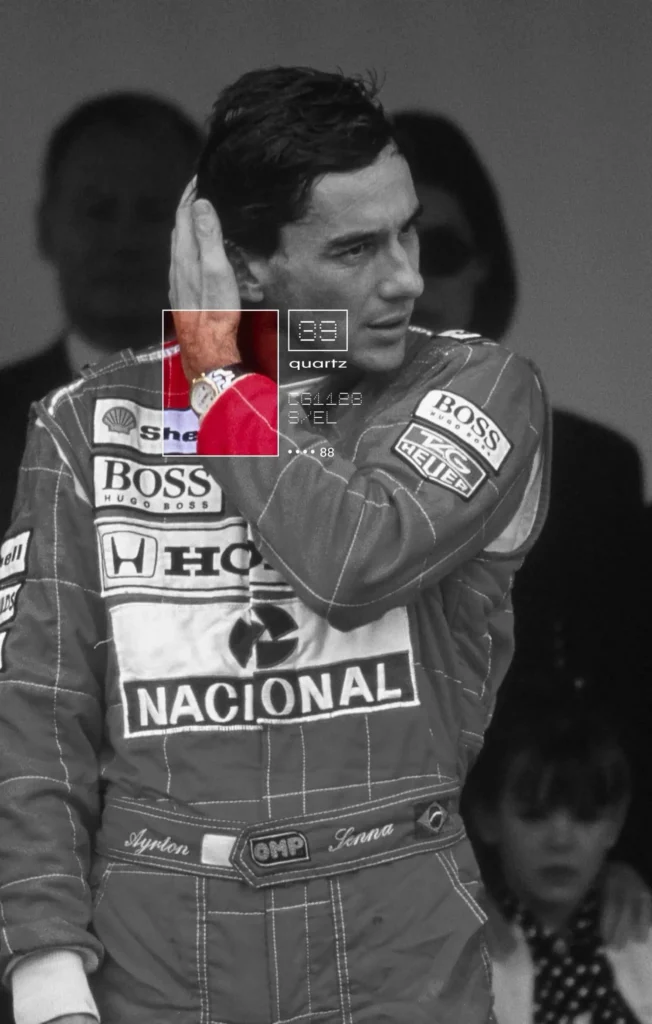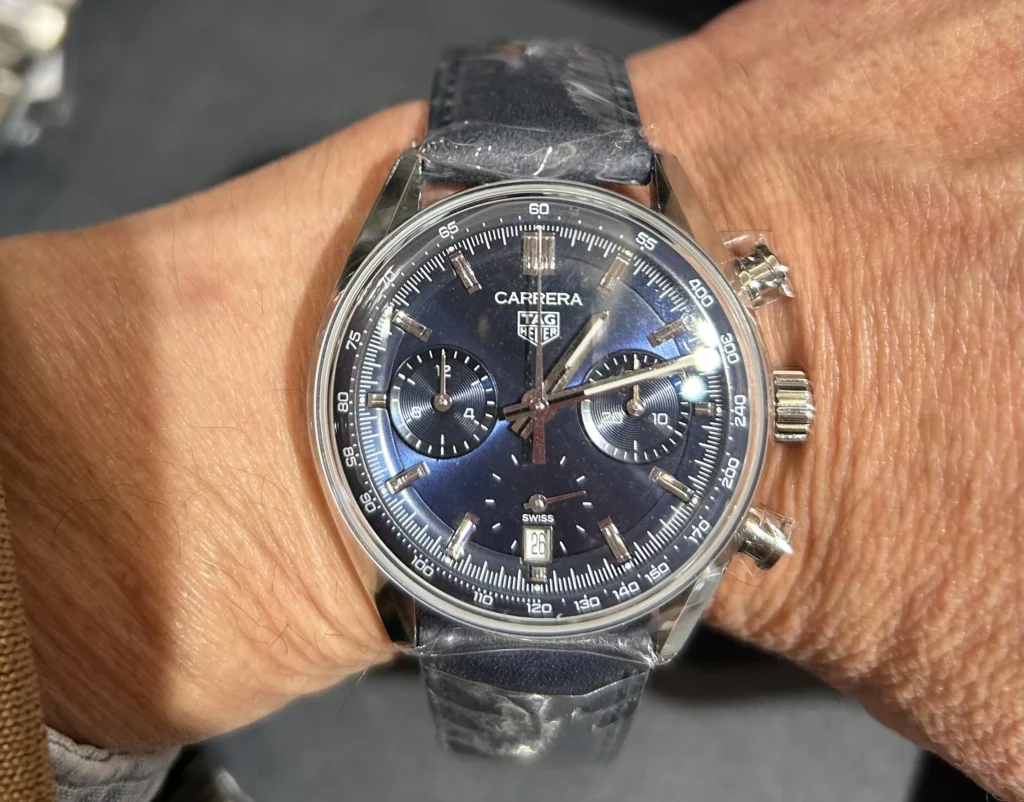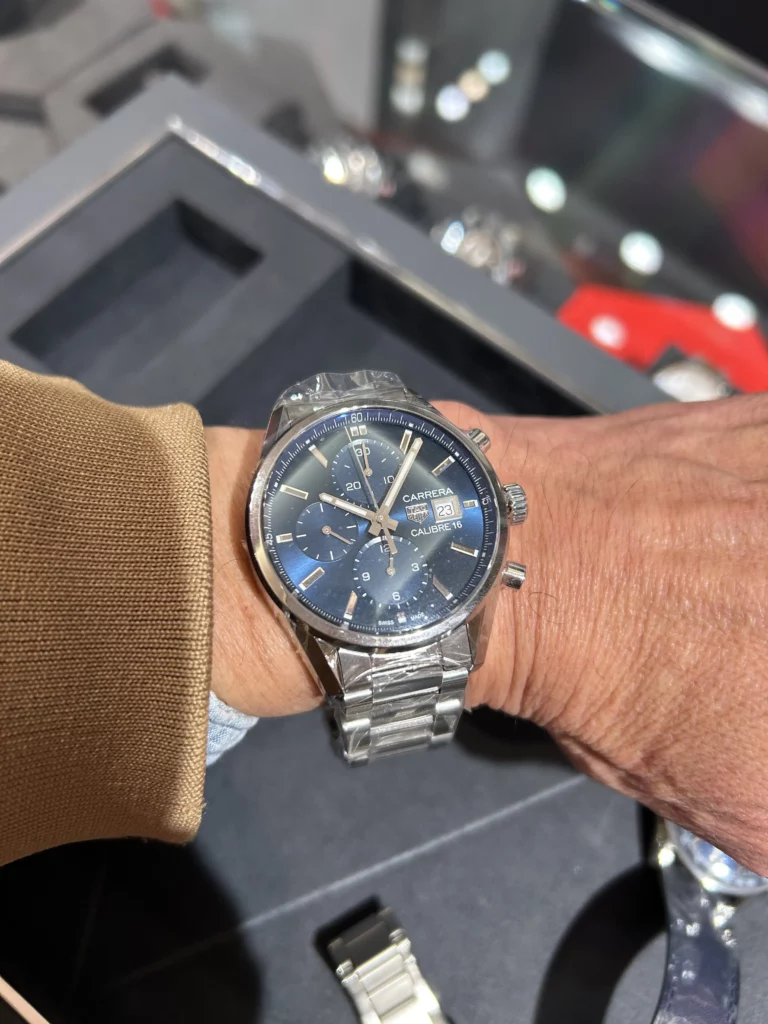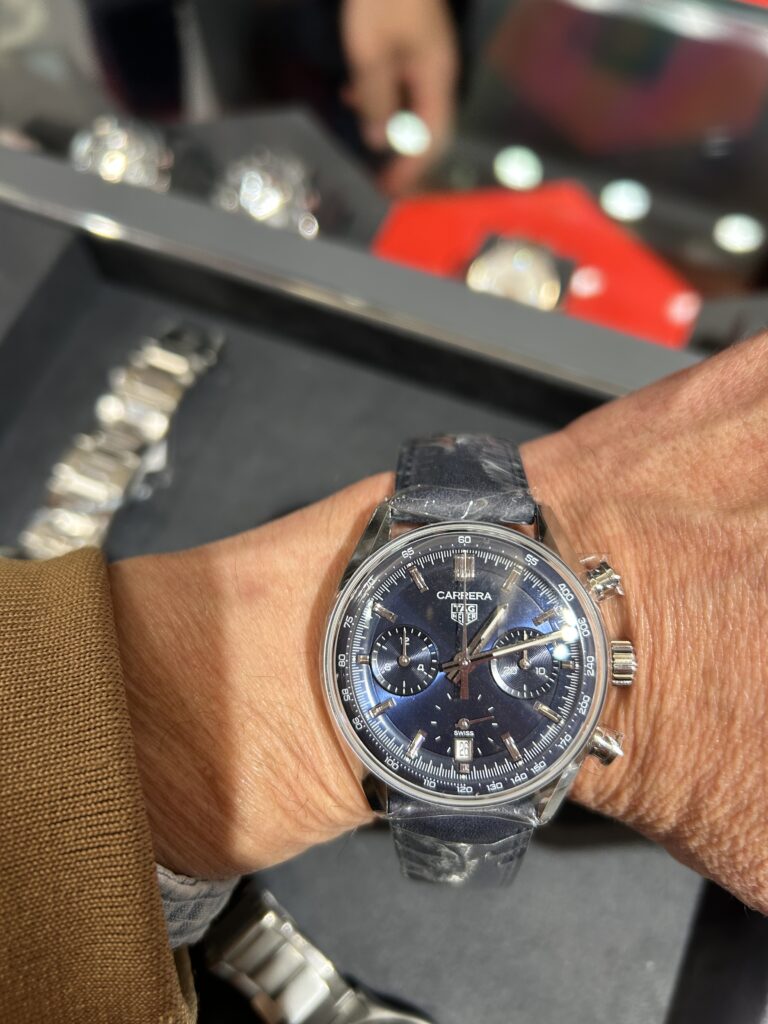 Hello Goro, The F1 season is over for 2024 and starting with the 2025 season, the LVMH Group has signed a global partnership agreement with Formula One (F1) for the year 2024. The group’s leading watch brands should bring to mind Tag Heuer and Ayrton Senna. Today we take a closer look at their relationship.
Hello Goro, The F1 season is over for 2024 and starting with the 2025 season, the LVMH Group has signed a global partnership agreement with Formula One (F1) for the year 2024. The group’s leading watch brands should bring to mind Tag Heuer and Ayrton Senna. Today we take a closer look at their relationship.
TAG Heuer, a gift from father to Senna

A documentary on Ayrton Senna is currently available on Netflix (Neflix). It was a Heuer chronograph, which appeared at the beginning of the show. After becoming South American champion in karting, Senna honed his skills to the point where he competed in the world karting championships in Portugal.
When he was looking for a step up, he decided to race in Europe in Formula Ford, which was the gateway to Formula One at the time. However, Senna’s father and he negotiated the expedition and the costs of participation.
His father, who shared Senna’s strong will, allowed him to sell his car and go to Europe for a year to help pay for the expedition. At that time, he gave him a Heuer chronograph that belonged to his father.
Smiling, he gave him a Heuer (now Tag Heuer) 3645, saying that with this watch he would be able to keep time in Brazil.
Fighting absurdity, Senna

His father sets various conditions for him to go to Europe. Senna’s father proposes that he should continue to race, while running the family business and attending university. However, Senna was adamant that he wanted to go to Europe.
Senna has been racing karts in his native Brazil since he was a child. Although he grew up in a wealthy family, he did not always want to be a racer. He was interested in cars from an early age, and Senna’s father never let his feelings get the better of him and let him cart.
A competitive boy, Senna didn’t just drive a kart, he was thoroughly determined to win. He also knew a lot about cars, and had such an extraordinary sensitivity that he could tell which part of a car had a problem just by listening to the sound of the engine.
His career progressed steadily and Senna became South American champion. He then competed in the world karting championship in Portugal, where he was inexplicably judged second overall, despite winning the final race.
The documentary showed that the inexplicable decision he received here was the driving force behind his subsequent career as a racer.
Chronograph used to measure time in carts.

The Heuer 3648 (or 3645) appears frequently at the beginning of the documentary. Senna’s father is seen in a karting session, where Senna’s time is measured with the Heuer 3645, and his father bursts with joy.
The Heuer 3648, a gift from Senna’s father, is commonly known as the Pre-Carrera and dates from the 1960s. The yellow gold case contrasts beautifully with the silver dial, making it a classy chronograph.
The movement is a hand-wound Valjoux 92, the last generation of hand-wound movements that would evolve into automatic chronographs a few years later. As the model is not fitted with a tachymeter, it is highly legible, even at 36 mm.
Obsessed with the demon of speed, Senna

Ayrton Senna was the first Formula 1 driver I saw when I was in my twenties, and was team-mate of Satoru Nakajima, the first Japanese full-season driver. At the time, I had no knowledge of F1 and had the image that F1 was a place where surplus money flowed from the bubble economy.
Even to the untrained eye, the difference between Satoru Nakajima and Senna is understandable. Even in the same car, Senna made fewer pit stops than Satoru Nakajima, and Senna’s driving was characterised by less stress on the tyres. I read an article in a specialist magazine that Senna’s acceleration work is different from that of other drivers.
In fact, in the rain, it is the only place where the driver’s skill can be shown as it should be. The race that made Senna famous was Monaco in 1984. After qualifying 13th, Senna closed the gap to race leader Alain Prost lap after lap, and was only a few laps away from pulling the upset when the race somehow came to an abrupt and controversial end.
It is not surprising that the organisers felt that ‘an unknown South American car from an unknown team called Tallman’ should not win the prestigious Monaco race, and that Prost, the absolute champion at the time, had been misled.
This was the moment when Senna’s driving became a well-known fact, as he was known as the Rainmaster.
However, Senna’s pursuit of speed over driving technique was to become the norm from that day onwards. The competition-obsessed Senna may have realised that in the end, racing requires absolute speed.
Episodes of Senna’s obsession with the demon of speed appear several times in the documentary.
Furthermore, Senna was by far the driver who took pole position (PP) more often than he won races. As you may know, no matter how many PPs you get, they don’t count for points.
PP only determines your place on the starting grid. At some race venues, such as Monaco, a PP can make all the difference between winning or losing a race, but at some tracks, qualifying second can put you in a better position going into the corners.
There were also many races where Senna continued to push the race even though he was far ahead of the second-placed driver.As a result, he was a racer who often put too much strain on his car, causing it to break down mid-race and abandoning the race. No matter what team orders came over the radio to slow down, Senna never let up on the accelerator and was famous for pulling away from the cars behind.
For the 2025 season, will TAG Heuer focus on chronographs?

Now, in fact, the global partner for Formula One watches has been Rolex for nearly 15 years. However, in 2024 the LVMH Group succeeded in signing a new global partner contract with Rolex for 10 years, offering an estimated three times the value of the Rolex contract.
The LVMH Group has several watch brands, but in general terms, it is expected that the TAG Heuer brand logo will be flooding the race venues from 2025. And the Senna logo will no doubt be there as well.
The author also expects the LVMH Group to focus on chronographs from 2025. Until the previous year, watch brands had been pushing for minimalism. Dress watches and formal watches with simpler functions and smaller dials were also seen at Watch & Wonders in 2012.
TAG Heuer’s customer base is young. If they use F1 as an opportunity to introduce a reasonably priced new chronograph, they can invest in the future. A general-purpose chronograph movement with minimal functions and a rubber strap chronograph could be a good fit for today.
Keep the price as low as possible and the exterior should be in the colours of the colourful Brazilian flag. For the movement, a manual-winding chronograph can be used for a thinner finish. A new movement based on the famous Valjoux 7753 might be a good choice.
TAG Heuer Racing Chronograph History

TAG Heuer has been passionate about car racing since the days of its predecessor, Heuer GmbH. The company’s history has followed a similar path to the evolution of the chronograph.
| Year | Contents | Relevant information |
| 1860 | Founded in Switzerland at Jack Heuer. | |
| 1822 | First chronograph patented. | |
| 1916 | Launch of the first chronograph capable of timing 1/100th of a second. | The Mikrograp |
| 1963 | Launch of the first Carrera (manual-winding chronograph). | |
| 1969 | Launch of a self-winding chronograph movement by a consortium of three companies. | Project 99 |
| 1970 | Launch of the Monaco with automatic chronogr |
From the late 1960s, the Swiss watch industry was beginning to be affected by quartz movements, and watch professionals realised the urgent need to develop the next generation of chronograph movements.
In the midst of this crisis, Jacques Heuer of the Heuer company began development together with Dubois Dépraz, and later Heuer approached Willy Breitling, then president of Breitling, and joint development by the three companies began.
Although development started in secret, Zenith was working on a similar project in Switzerland at the same time, and Seiko on the other side of the ocean.
Reference article.
Bringing Senna’s legacy into the future, the story of TAG Heuer and Senna, brought to life by LVMH’s entry into the market.
What we want TAG Heuer to aim for is to pass on Senna’s will to the future. Senna’s frustrations in racing should not fade away: Formula One should not discriminate on the basis of race, gender or nationality.
When Senna was there, the centre of motorsport was Europe and racers had to be European, even more so than now. There was the decision Senna received in Portugal when he was a child, the chicane collision with Prost at Suzuka and the subsequent unconvincing disqualification.
Modern F1 also takes place in Europe for 11 of the 24 races, and it is an undeniable fact that the heart of F1 is Europe; LVMH is a European luxury brands group, but it belongs to a relatively new group.
The watch brands belonging to the group are varied. Many of them are prestigious, but they like to distinguish themselves from conservative watchmaking. Both TAG Heuer and Zenith are brands that utilise tradition but also like to try new things.
Conclusion
Tag Heuer has a large line-up and variety of products, and gives the impression of being more weighted towards online rather than in-store sales. Having a large range is important for e-commerce operations.
E-commerce sites generally favour long-selling items over big-selling hits, as they can hold more stock than shops, which have limited space. Also, unlike in-store sales, they can consolidate products and operate more efficiently.
Unlike traditional luxury brands, TAG Heuer does not take a ‘rare and hard to find’ approach. In Europe, Formula One is a sport that many people are passionate about. In Japan, many people have the impression that F1 is about rich people.
However, it is important to remember that the people who invest in the race are the rich, while the rest of the public is also passionate about the entertainment. The official TAG Heuer website also states that WE ARE BACK.
The top screen of the official website shows the enthusiasm of TAG Heuer, which has been involved in many races as a brand. You may see many of the brand’s logos and Ayrton Senna’s portrait at the races.
We look forward to seeing how Tag Heuer will return to the circuit in 2025.
Related articles Fomula1 and luxury watches: technology and beauty together